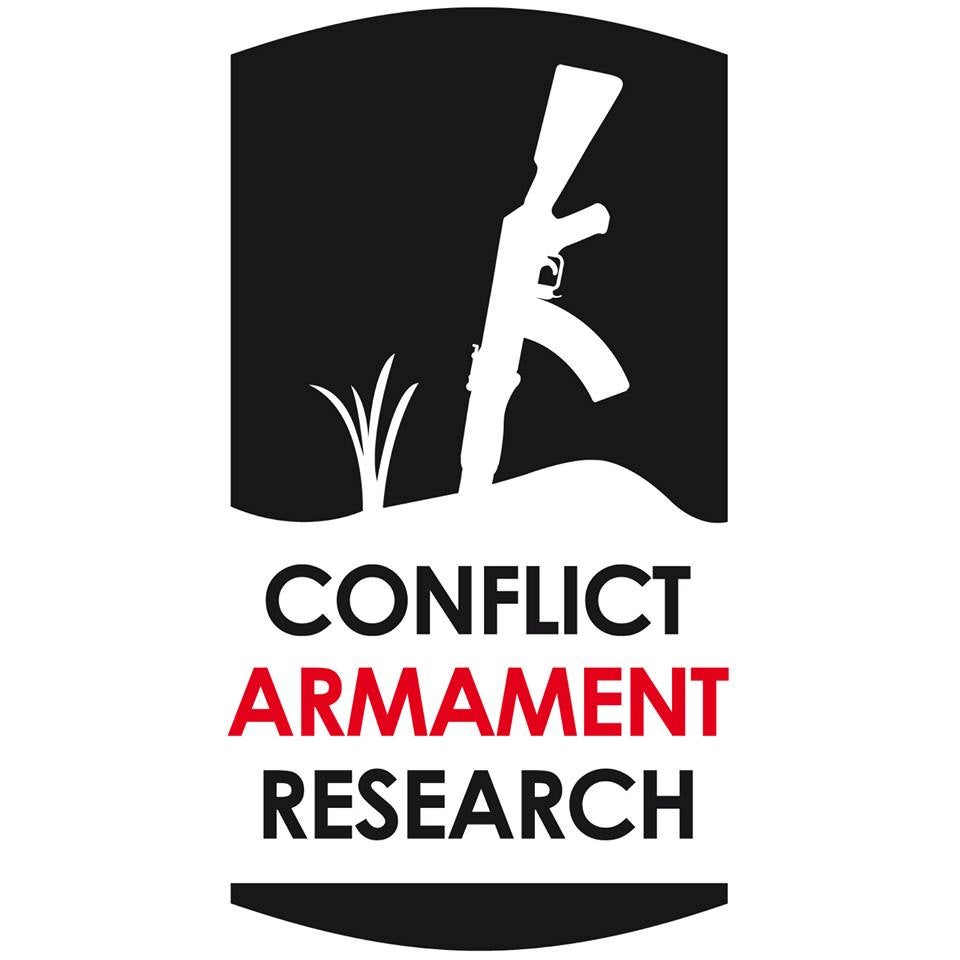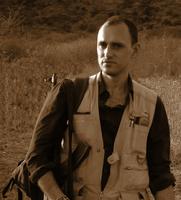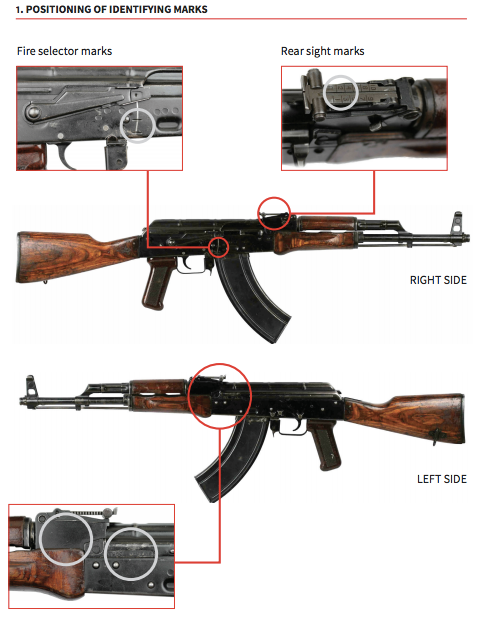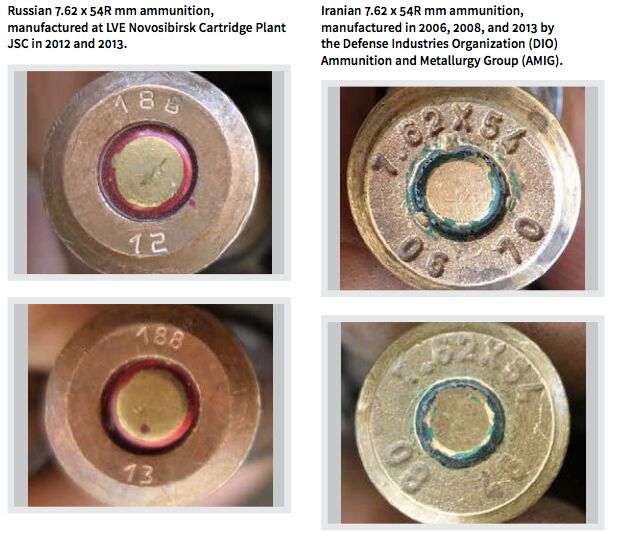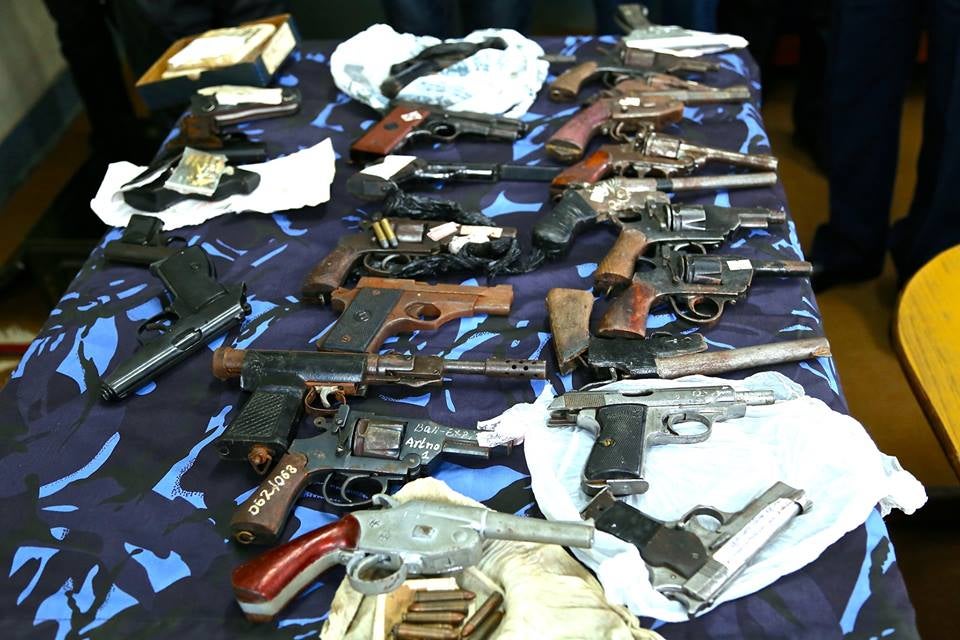Recently, The Firearm Blog received the opportunity to interview Timothy Michetti from Conflict Armament Research. The organization is a relatively new one, but works overseas in direct collaboration with various governments and rebel groups, to track and record the illicit small arms in conflict zones. Their work isn’t in the news often, but what they are finding is absolutely phenomenal when it comes to on the ground research in these hard to access countries. We’re often looking at Youtube videos of rebels in Syria with STG44s or a picture from one of these countries but CAR is actually going into these conflict zones and finding out more about them first hand.
The Firearm Blog- Briefly explain what is Conflict Armament Research’s mission and founding intent in your own words?
Timothy Michetti- Conflict Armament Research was established to determine how weapons were diverted from the licit to the illicit market. We do this by tracking and tracing illicit conventional small arms and light weapons in active conflict zones around the world. Through the documentation of serial numbers and unique factory markings, we are able to determine the origins of these weapons and trace their history of possession from where they were picked up to where they were produced.
TFB- So CAR works very closely with the United Nations?
TM- Not necessarily, all of our information is placed on a system called iTrace, established by funding by the European Union. iTrace is an open source platform, similar to Google Earth, that contains all of our investigative work, photos and serial numbers of weapons that we’ve encountered. We also produce reports on our findings, some of which are used by the EU and many of which get presented at UN forums as well. It’s for general consumption, policy makers from governments around the world, export agencies, academics, and journalists as well.

An example of an iTrace weapon trace. Notice how the serial number was partially erased. This particular trace follows a Type 56 from China to its location in Sudan. The idea isn’t to pinpoint the location of various weapons around the world, but instead to find out who is moving these weapons into conflict zones.
TFB- So where does all the funding come from?
TM- The majority of our funding comes from the European Union, which focuses the curtailment of illicit small arms/light weapons into conflict zones as one of its global strategies. We currently are working to broaden and diversify our funding as well. We also have some funds from consultancy work and other services that CAR offers.
TFB- What are some of the countries CAR has been to and can talk about the work in them?
TM- CAR started out in 2011, at which time our primary focus was on Sub-Saharan rim countries, such as Somalia, Sudan, South Sudan, The Congo, etc. During this time our founder, James Bevan, recognized that there was a lack of focus on the tracing of arms in contemporary conflict zones. Previously, research had primarily focused on looking back, seeing which actors were involved in the supply of weapons. A lot of our work still centers around this area, however we’ve recently expanded into the Middle East and other areas.
There are a lot of preexisting myths of how weapons get into these regions and move about. People typically think of Lord-of-War type dealers and large airplanes delivering weapons to conflict zones. This used to be the case (and occasionally still is), but over time these patterns change as well as the actors involved and the methods of transportation and the quantities and so forth. Once we start looking on the ground some of these myths are proven to be true while the other ones fall apart. Some interesting things we’ve uncovered are networks of Iranian and Sudanese originated weapons that are present in several of the conflict zones we investigate today. Before people didn’t recognize these networks were active, the perception was that most came from surplus Soviet Union ammunition and arms.
TFB- Which one of these has been the most interesting or revealing from the small arms trade point of view?
TFB- Who are the kind of researchers that go on these missions?
TM- CAR investigators have a range of different backgrounds, generally from the academic field. Four of my colleagues have been on UN panel of experts that monitor the arms flows into countries that are under embargo. Others have developed the methodology that is currently being used by several different UN panels around the globe. In addition to that, some have been investigative journalists who became involved from a sense of curiosity about arms in conflict, and wanting to understand how these dynamics work. So you have to have certain fundamentals, but not a specific job or experience on your CV that says you’re therefore qualified to do this job. It’s especially good to have a diverse background and ranges of experiences.
TFB- In a lot of your reports there is some pretty specific and heavy emphasis on the details about these firearms your organization is researching, this knowledge isn’t developed overnight.
TM- Time spent in the small arms, light weapons research field that has brought organic knowledge to these researchers and investigators. There is also a wealth of reference materials, produced by such organizations as Small Arms Survey. We understand that our findings may be open to criticism, for example organizations come up to us and say, “Well this is good material but have you had any outside conformation of your findings?” A few months ago we contracted an organization called Armament Research Services (ARES), a network of weapons experts with very specialized knowledge. CAR will do an internal analysis and then we’ll send our finds over to ARES to check our work as well. So we have an internal and external checks to make sure the claims that we make are accurate. We have a very high standard that our evidence needs to pass before we put it on the iTrace system. This is why we don’t just sit back and investigate videos on YouTube because there is a certain level of detail that you cannot get through open source information. Especially the serial numbers, markings, attachments, and other bits of information that are need to reveal time and place of manufacture. From open source information we may be able to discern that an AK-platform weapon in use somewhere came from Bulgaria, but if we’re up close to it, we can tell what factory it came from, when it was made, and through tracing, how it got there.
TFB- How big are these teams?
TM- Generally teams consist of two field investigators. There are situations where an investigator will go by themselves, but usually there are two people. In certain circumstances, such as Iraq and Syria, due to the quantity of material flowing through those conflicts, we will send in multiple teams.
TFB- I think the American firearms community has a perception that anyone in the UN or associated communities doesn’t know anything about firearms and are out to ban what we have, but from what I’ve seen, your organization has a wealth of unbiased knowledge about these small arms.
TM- There is a lot of misperception as to the implications of crafting international policy when it comes to domestic gun control. We don’t advocate policy, we try and present hard evidence. You can’t make policy based on stories. If you want to improve domestic public health, you need to find out what is making people unhealthy. You can’t say, “Well, I heard this”. No, you need to have research done, evidence that has been thoroughly analyzed otherwise you’re going to have policy that may have detrimental effects.
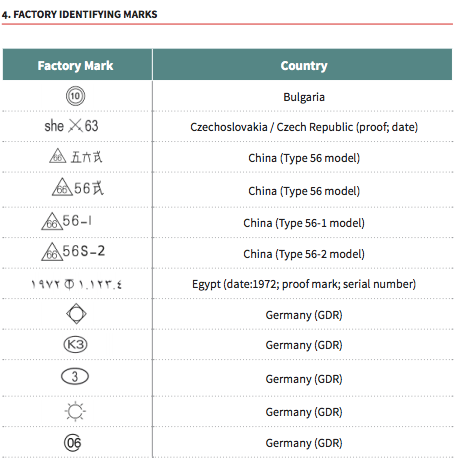
Marking charts and placement on Kalashnikov series rifles. I would expect to find these commonplace among my gun books, but not from a UN affiliated organization. CAR takes small arms knowledge very seriously as it is key to their work. Both of these pages are taken out of CARs Kalashnikov Field Guide.
TFB- What are some of the more interesting finds of small arms or ammunition?
TM- I think the most interesting finding recently has been the prevalence of Iranian ammunition throughout the African continent. We kept encountering bullets and casings that were unmarked except for the caliber, which had the same idiosyncrasies. This revealed that they came from the same source, but we were still unsure as to where. This consisted until a ship originating in Iran was interdicted off the West African coast with a hidden cache of the same unmarked ammunition we were finding. Through connecting those dots and other sources, we were able to determine that all this mystery ammunition was produced in Iran. A very interesting finding.
More recently, in South Sudan we have picked up a lot of evidence at massacre sites of ammunition that was produced in 2014 in Sudan, showing that Sudan has continued to supply many different sides within the civil war. These demonstrate the benefit that having physical access to the ammunition can have, the weapons never lie. Someone can say, “Oh, this weapon is from such and such” but it has unique set of marking that can be used to reveal who sent it there and how.
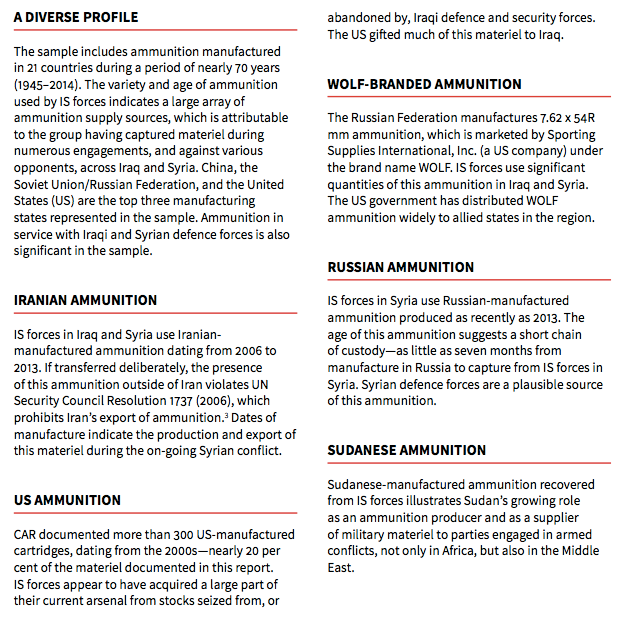
Some of the findings that the group has published online. This is from a PDF document that is available from CARs website. This information was usually only being passed around with government intelligence services but is now being researched in the public domain.
TFB- Can you give examples of small arms or ammunition that were made to be untraceable?
TM- To prevent the tracing of weapons, often groups will remove serial numbers using different methods in order to kind of cover up their origin. In this instance we need to gather as much evidence as possible about the context they are recovered and methods used. For example, in Iraq and Syria we found a lot of weapons that had their serial numbers removed in the exact same fashion using an oxy-acetylene toch. This shows the high likelihood that a single had modified the weapons to cover up where they came from.
This was similar to a case in South Sudan with rebel groups having similar weapons with serial numbers removed in the same fashion. In this case we do something called “Mapping” in which we investigate the context the weapons are found in, such as interviewing the militias and arms groups about how they acquired the weapons. Through our interviews with different rebel groups, we kept hearing the same story about the dates and locations they received the weapons and who gave the weapons to them. Through this process we were able to determine that the weapons were being handed out by the National Intelligence and Security Service of Sudan. So yes, governments and organizations take steps to try and cover up their tracks but there are other methods to determine who has supplied weapons. On the other hand, there are several situations where weapons just cannot be traced and that is a reality of the job.
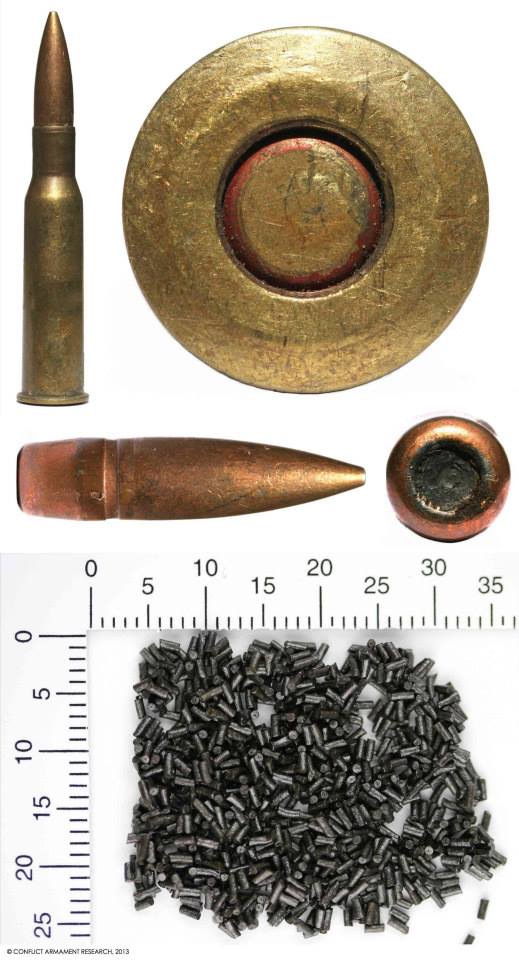
A mystery round on CAR’s Facebook page, it appears to be a 7.62x54R but from where? Who made it? Who’s sold it and bought it? These are the questions CAR looks to answer.
TFB- What are some of the problems in this field of work? Politically, in the field, or funding wise?
TM- Politics are an inextricable aspect of what we do. As long as sovereign nations consider the supply of weapons to non-state actors as an acceptable tool in their tactical toolbox, this will remain the case. For example, the supply of weapons to rebels in Ukraine, which Russia regularly denies, is often ignored. However once physical evidence is documented that cannot be reputed, then it becomes harder to ignore. People whom this work affects often feel uncomfortable by our finds as it forces them to act upon it. So we’re still struggling to gain a level of autonomy that will allow us to work in more areas and reveal exactly what is going on everywhere and it is a delicate process in getting to that point.
Specifically, for tracing history of possession, we rely on the cooperation of manufacturers and government to respond to trace requests. This process is based on agreements under the International Tracing Instrument (ITI). Governments are supposed to mark weapons with serial numbers, keep records of when these are produced and when sold and then share this information when requested by authorized groups. Without these records tracing becomes very difficult. The international community is working to improve this process because often records aren’t kept or governments don’t want to share information. In time, CAR wants to help improve these tools and make it a lot easier to trace arms going into conflict zones.
TFB- A lot of CARs work is emphasized on areas such as the Middle East and Africa, what about other parts of the world such as South America or Asia?
TM- We’re interested in any region of the world experiencing active conflict. However, in many regions, such as South America, there isn’t an active conflict in the traditional sense (except Columbia), but experience conflicts that are seen more as public security issues. However our work can benefit these regions as well as the supply of illicit weapons drive insecurity.
The main constraining factor for our organization is human resources. We have eight field investigators and we can only be one place at one time. Level of access is also a constraint because our work depends on the cooperation of national governments and willingness to work together.
TFB- Has any attention been paid to the hand crafted guns from Peshawar?
TM- No, CAR has not looked into Peshawar specifically, but the issue of handcrafted weapons is an interesting one. A couple of my colleagues recently returned from Nepal where they documented a bunch of weapons, a large majority of which are handcrafted pistols. It is almost impossible to conduct tracing of cottage-industry weapons, similar implications will be faced from the growing production of 3D printed firearms as well.
To counter this, it is more up to organizations such as Action on Armed Violence that are focused on creating economic opportunities for the producers of these firearms so they don’t have to depend on producing handmade firearms as their only option. However, often the production of homemade weapons is driven by the feeling of insecurity, such as in Egypt during the past few years.
TFB- Can this line of work be used in the United States to help solve illegal firearms trafficking?
TM- We don’t focus domestically in the United States or Western Europe. What we’re focused on is active conflict zones in which weapons have the effect of fueling and intensifying ongoing conflicts. That being said, understanding how those who shouldn’t be allowed to possess weapons acquire them (and working to improve these systems) would be a valuable service to the public safety of any society.
TFB- So where is CAR looking into develop from here?
TM- Right now we’re a very young organization we are working to get our name established as the premiere arms tracing organization in the world with the most authoritative reporting and high quality data. We hope to continue to grow so we can get more coverage and be in even more locations where we don’t have coverage yet such as South America and South East Asia. Arms flows tend to not remain within a single country’s borders. Weapons cross international boundaries and therefore we need to be present in all countries within a region and that requires people. We fully expect to get there with multiple investigation teams all around the world. In addition we are also hoping to get to a point where we can help to advance and improve upon the International Tracing Instrument.
The Firearm Blog would like to thank Timothy Michetti for taking the time and completing this interview.
 Your Privacy Choices
Your Privacy Choices

